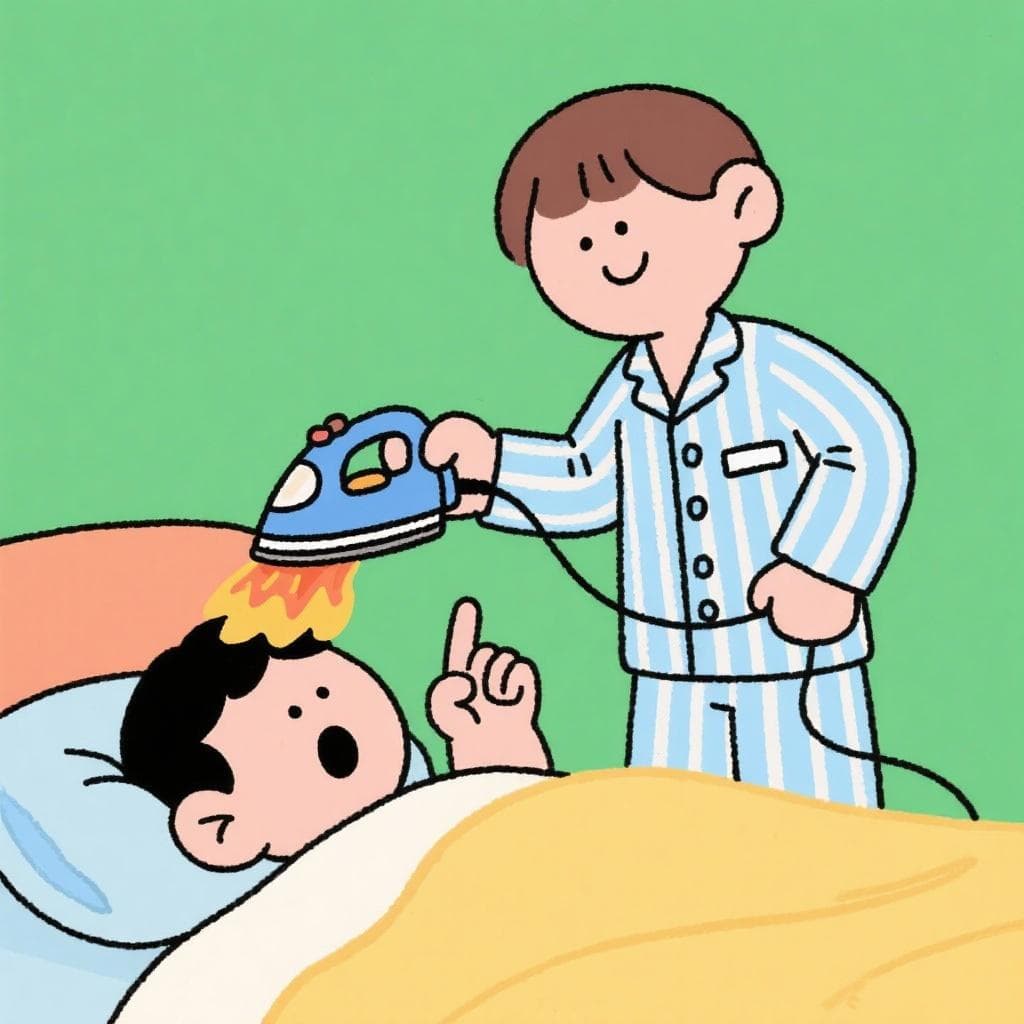Planchar la oreja
/plan-CHAR la oh-REH-hah/
To go to sleep; to hit the sack.
💡 Understanding the Idiom
🎨 Literal vs. Figurative

Literally, this means 'to iron the ear'.

In reality, it just means to go to sleep, because your ear gets flattened on the pillow.
Key Words in This Idiom:

📝 In Action
Estoy agotado, me voy a planchar la oreja un rato.
B2I'm exhausted, I'm going to hit the sack for a while.
Después de la fiesta, lo único que quería era llegar a casa y planchar la oreja.
B2After the party, the only thing I wanted was to get home and go to sleep.
📜 Origin Story
This idiom comes from a very simple, visual idea. When you lie down on your side to sleep, your ear gets pressed flat against the pillow, looking as if it has been ironed smooth. It’s a funny and graphic way to describe the act of putting your head down to rest.
⭐ Usage Tips
A Funny Way to Say Goodnight
Use 'planchar la oreja' when you want to informally announce you're going to bed. It’s perfect for friends and family and adds a bit of humor. Think of it as a more colorful version of 'irse a dormir' (to go to sleep).
❌ Common Pitfalls
Not for Formal Situations
Mistake: "Using 'planchar la oreja' with your boss, a professor, or in a formal email."
Correction: This is a very casual, almost slang, expression. In formal or professional settings, it's safer to use standard phrases like 'acostarse' or 'irse a dormir'.
📚 Related Grammar
Want to understand the grammar behind this idiom? Explore these lessons for a deep dive:
The Informal Future ('ir a' + infinitive)
The phrase 'me voy a planchar' in the first example shows how we use the verb 'ir' (to go) plus 'a' and the infinitive 'planchar' to talk about something you are going to do soon.
Noun Gender and Articles (el, la, un, una)
The idiom uses the feminine definite article 'la' right before the noun 'oreja' (ear), which is a feminine word, showing how articles must match the noun's gender.
🌎 Where It's Used
Spain
Extremely common and widely understood. It's a classic informal expression.
Latin America
Much less common and may not be understood in all countries. Many regions have their own local slang for going to sleep.
🔗 Related Idioms
✏️ Quick Practice
💡 Quick Quiz: Planchar la oreja
Question 1 of 1
If your Spanish friend says 'Bueno, me voy a planchar la oreja', what are they about to do?
🏷️ Tags
Frequently Asked Questions
Can I use 'planchar la oreja' for a short nap?
Yes, you can! While it usually means going to bed for the night, you could say 'Voy a planchar la oreja un ratito' to mean 'I'm going to take a quick nap.' The context makes it clear.